Templo Gilsangsa en Seúl (길상사(서울))
3.3Km 2025-04-02
Seonjam-ro 5-gil 68, Seongbuk-gu, Seúl
El templo Gilsangsa está situado en el distrito de Seongbuk-dong, del norte de Seúl. Fue construido en el recinto del famoso restaurante Daewongak, cuya dueña donó la propiedad al venerable monje Bupjeong (1932-2010), que fue la persona que transformó el lugar en este templo inaugurado en 1997. Aunque Gilsangsa tiene una historia relativamente corta, está muy bien situado en el centro de Seúl, por lo que atrae muchos visitantes tanto nacionales como extranjeros. El templo también sirve como lugar cultural, ya que ofrece diversos programas como enseñanzas budistas, y estancia en templo. Las construcciones Gilsang Seonwon (centro zen) y la Casa el Silencio están dedicadas a la meditación. Gilsang Seonwon ofrece habitaciones para que mediten budistas con experiencias, mientras que la Casa del Silencio está abierta al público en general. Gilsangsa también tiene una sede en París.
Mercado Dongdaemun y Shopping Town de Dongdaemun (동대문 종합시장·동대문 쇼핑타운)
3.3Km 2025-04-07
Jong-ro 266, Jongno-gu, Seúl.
El Mercado Dongdaemun es uno de los mercados más representativos de Corea y fue fundado el 23 de diciembre de 1970, como el mayor de su clase en Asia. En diciembre de 1985 se estableció Shopping Town de Dongdaemun y ahora el área abarca cinco edificios en total (A, B, C, D, y Shopping Town). Hay más de 5.000 tiendas situadas en este complejo que venden telas diversas, materiales, accesorios, artículos para bodas, etc.
Museo de la Muralla de Seúl (Hanyang Doseong) (한양도성박물관)
3.4Km 2023-08-28
Yulgok-ro 283, Jongno-gu, Seúl
La Muralla de Seúl, llamada Hanyang Doseong en coreano, fue construida con la finalidad de marcar el antiguo límite de Seúl e impedir las invasiones extranjeras, originalmente con una longitud total de 18,627 km. Ubicado en el punto inicial de la ruta de senderismo Sunseong, el Museo de la Muralla de Seúl es un espacio cultural que presenta la historia de esta muralla y su valor. Dispone de la sala de exhibiciones permanentes, la sala de exhibiciones especiales, el centro de información de la muralla y la sala de estudio.
Mercado Pyoung Hwa de Seúl (서울 평화시장)
3.4Km 2024-01-23
Cheonggyecheon-ro 274, Jung-gu, Seúl.
Arteaspoon (아티스푼)
3.5Km 2025-09-04
Sinheung-ro 36-gil 7, Yongsan-gu, Seúl
Universidad de Yonsei (연세대학교)
3.5Km 2023-07-03
Yonsei-ro 50, Seodaemun-gu, Seúl.
Hello Apm (헬로우 에이피엠)
3.5Km 2024-01-26
Jangchungdan-ro 253, Jung-gu, Seúl
Doota Mall (두타몰)
3.5Km 2025-09-03
275, Jangchungdan-ro, Jung-gu, Seoul
The Migliore (Sucursal de Dongdaemun) (밀리오레 (동대문점))
3.5Km 2024-02-21
Jangchungdan-ro 263, Jung-gu, Seúl.
Puerta Heunginjimun (Dongdaemun) (흥인지문)
3.5Km 2023-02-21
Jong-ro 288, Jongno-gu, Seúl
La puerta Dongdaemun fue originalmente llamada Heunginjimun, y es la antigua entrada oriental a la ciudad de Hanyang (Seúl).
Dongdaemun fue edificada por el rey Taejo in 1396, renovada por el rey Danjong en 1453, y su actual estructura fue hecha por el rey Gojong en 1869. Aparentemente, la gente comenzó a llamarla Heunginjimun desde los tiempos del rey Sejo (1455-1468). Pese a que la puerta es conocida en general con el nombre de Dongdaemun, mucha gente aún la sigue denominando Heunginjimun, con la intención de preservar su antiguo legado.
La característica más interesante de Dongdaemun es que tiene un ongseong, un muro externo especialmente construido con forma de media luna. Originalmente, el palacio real en Hanyang se había erigido sobre un terreno bajo, por lo que era difícil defenderlo de las invasiones. Por ello, hicieron levantar un muro para compensar dichas desventajas. Se puede observar que la puerta fue hecha teniendo en consideración la geografía del entorno. Las rocas de ongseong tienen diferentes colores, que fueron cambiando a través de las diversas obras de renovaciones que sufrió la puerta.
En el centro del muro reforzado de piedra se encuentra la puerta más pequeña Hongyemun. Sobre esta, se halla el piso intermedio compuesto de cinco secciones y el techo tiene el estilo llamado "de Ujingak". En los aleros del techo están las estatuas japsang, que se parecen a animales y se dice que espantan a los espíritus malignos. La estructura de Dongdaemun tiene una intrincada técnica de los detalles y hay una gran exaltación de la decoración, con lo que muestra muy bien el estilo de la arquitectura que había en los últimos tiempos del período Joseon.
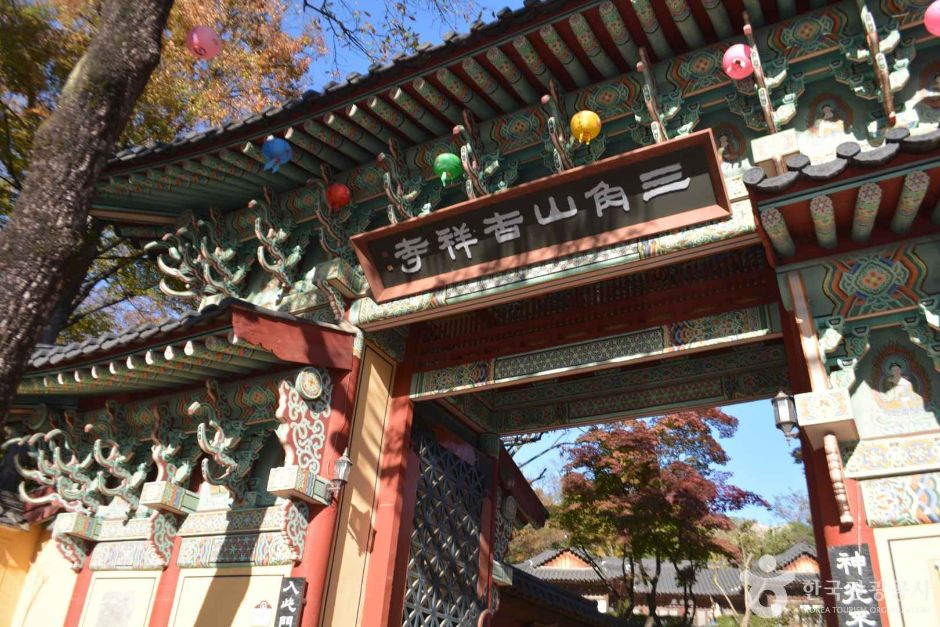
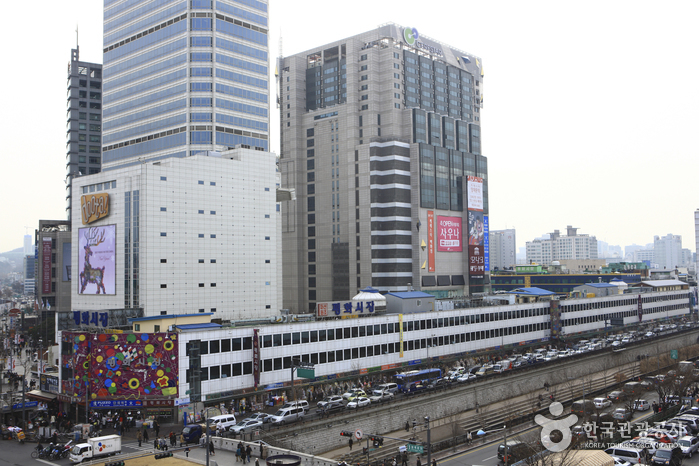
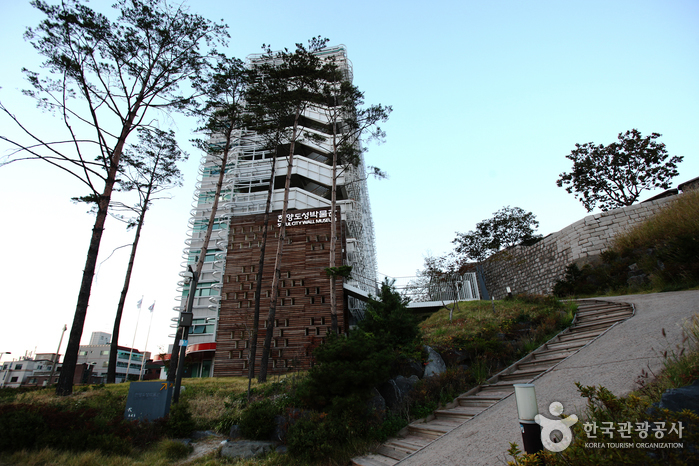
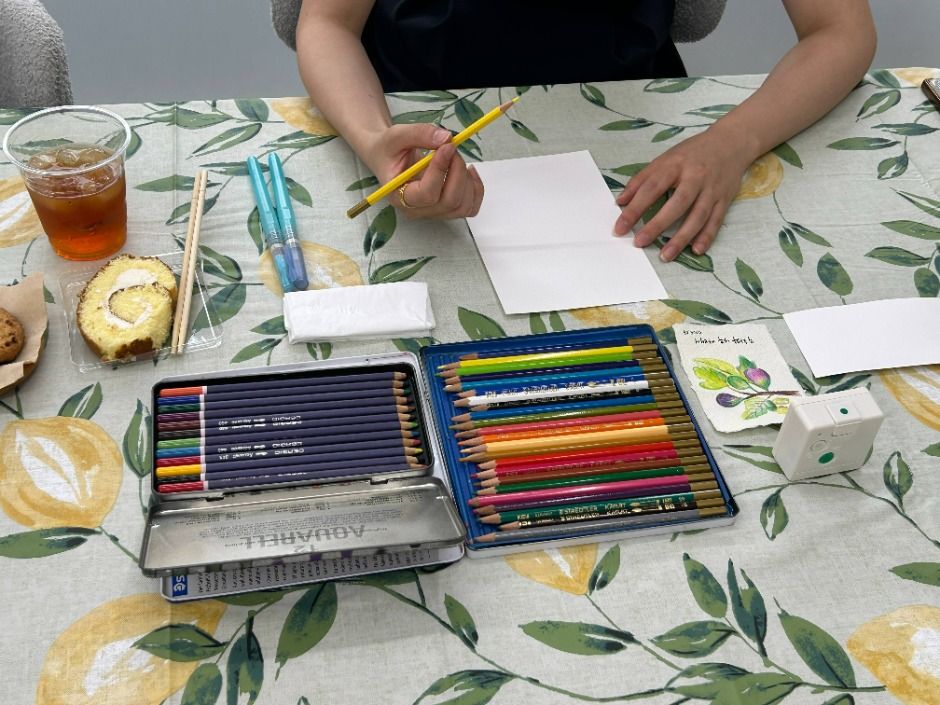

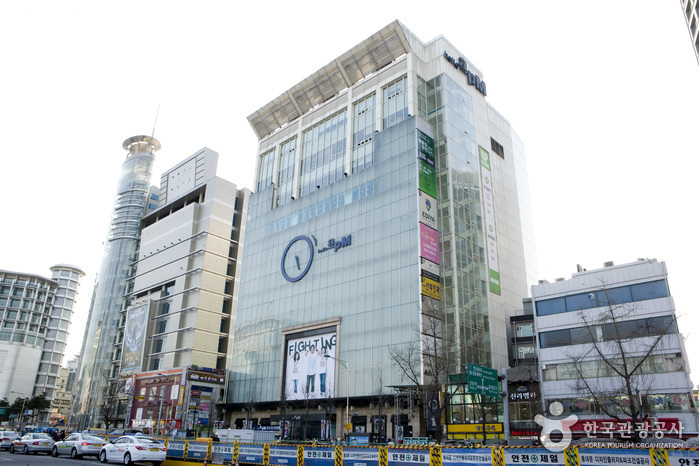
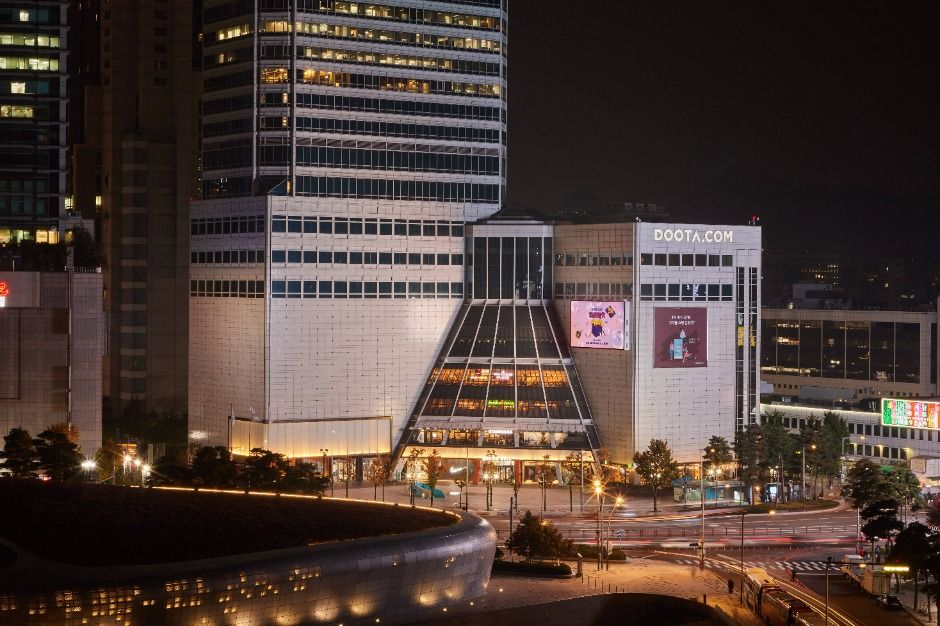
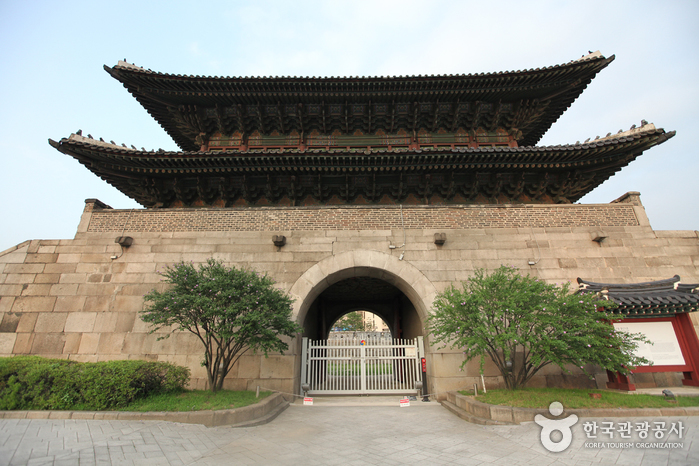
 Español
Español
 한국어
한국어 English
English 日本語
日本語 中文(简体)
中文(简体) Deutsch
Deutsch Français
Français Русский
Русский